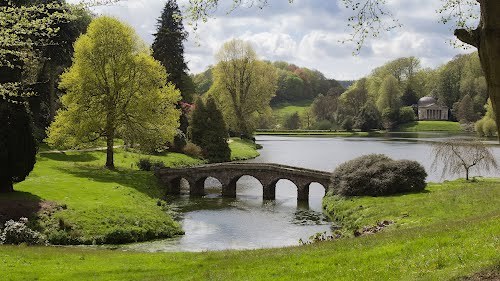ex-libris-blog:Echoes of warEgbert’s StoneThe location of Egbert’s Stone, where Alfred the Great gat
ex-libris-blog:Echoes of warEgbert’s StoneThe location of Egbert’s Stone, where Alfred the Great gathered his army before the battle of Ethandun (Edington, Wiltshire) has been a subject of debate for many years. There are several possible locations, but clear evidence is very slight, and the conclusions drawn by historians are really only based on calculated guesswork. Wiltshire folklore indicates two sets of sarsen stones which are in the right general area and which might be Egbert’s Stone. The first is the boundary stone (ST773312), which was traditionally set up by Egbert at the side of the river Stour where the borders of Wiltshire, Somerset and Dorset meet. The place where three roads or boundaries meet is a powerful place in folklore and this might indeed be a favoured location for a meeting-place. The point at which the three counties meet beside the lake at the rear of Bourton Mill (Bourton, Dorset) is marked by Egbert’s Stone which once fell into the River Stour, but was rescued and re-erected. In 878 it formed the rallying point for Alfred the Great’s troops before the Battle of Ethandun. His grandfather, Egbert of Wessex, was said to have placed the stone there to settle the shire boundaries. Just over the county border is King Alfred’s Tower.The other place is at Kingston Deverill, where two sarsen stones are propped together in an enclosure near the church. We are told in Wiltshire Archaeological Magazine that in 1877 “certain large stones were examined: they are called ‘Egbert’s Stones’ or ‘King’s Stones’ and are spoken of by the Saxon Chroniclers; they were brought by a farmer from King’s Court Hill, where King Egbert is traditionally said to have held court…” By the time Maud Cunnington examined the stones in the 1920s, the folklore had become a little more general, and the saying was simply that the stones on the hill had been the meeting-place of kings. In this case we are probably seeing an instance of misinterpretation of the place-name Kingston, which means not the ‘King’s Stone’ but the ‘King’s enclosure of land’. On the other hand, ancient sites, stones and barrows and hillforts, have been used as meeting-places down the centuries, and misinterpretation of a site’s place-name does not preclude use of that site as a meeting-place.Text: source (1) (2)Images: (1) King Egbert of Wessex, engraving; (2) River Stour at Bourton, Dorset; (3) Sarsen stones at Kingston Deverill, Wiltshire; (4) King Ecbert, Vikings, History channel -- source link
Tumblr Blog : ex-libris-blog.tumblr.com
#vikings#kistory#english history#king egbert#kings



